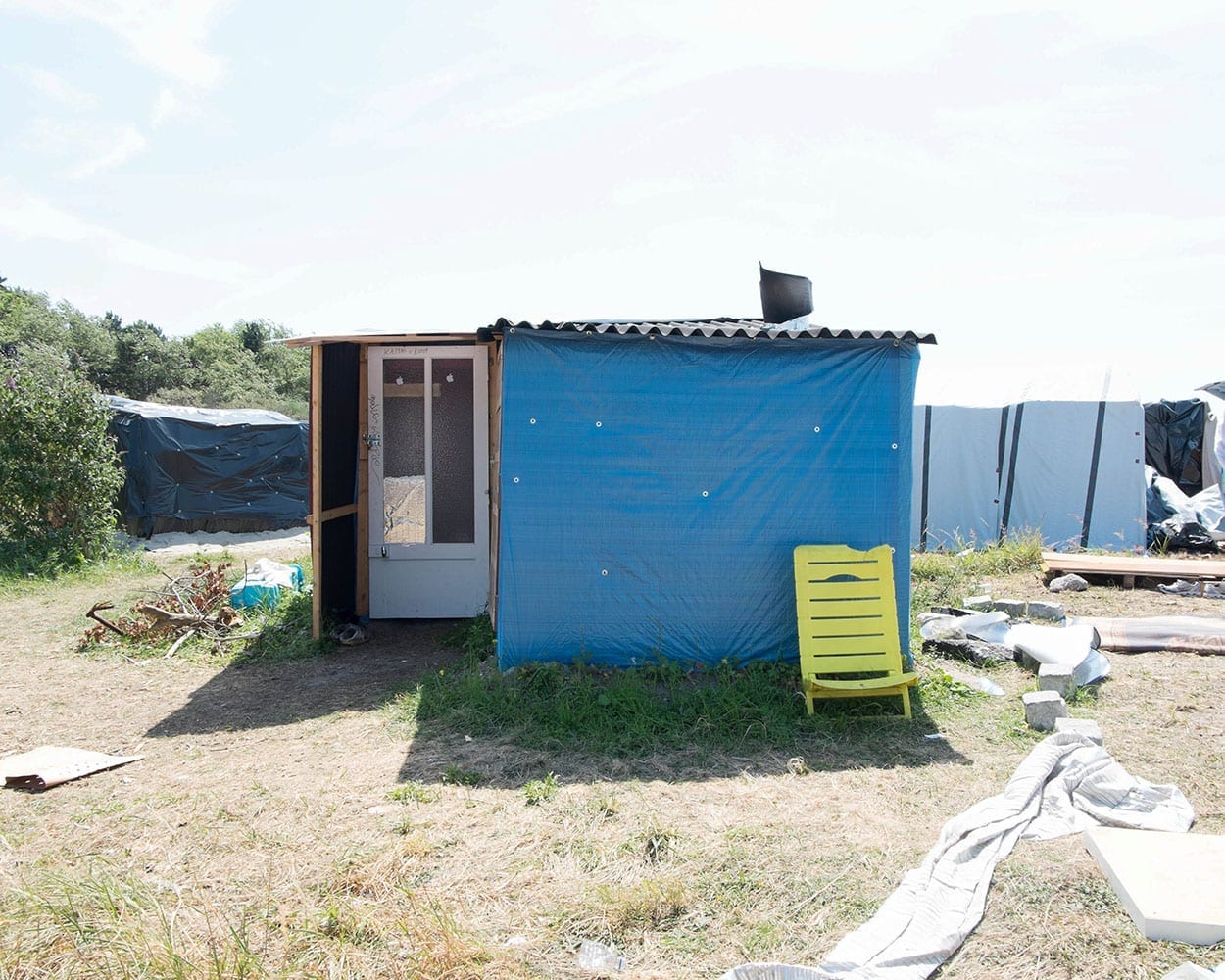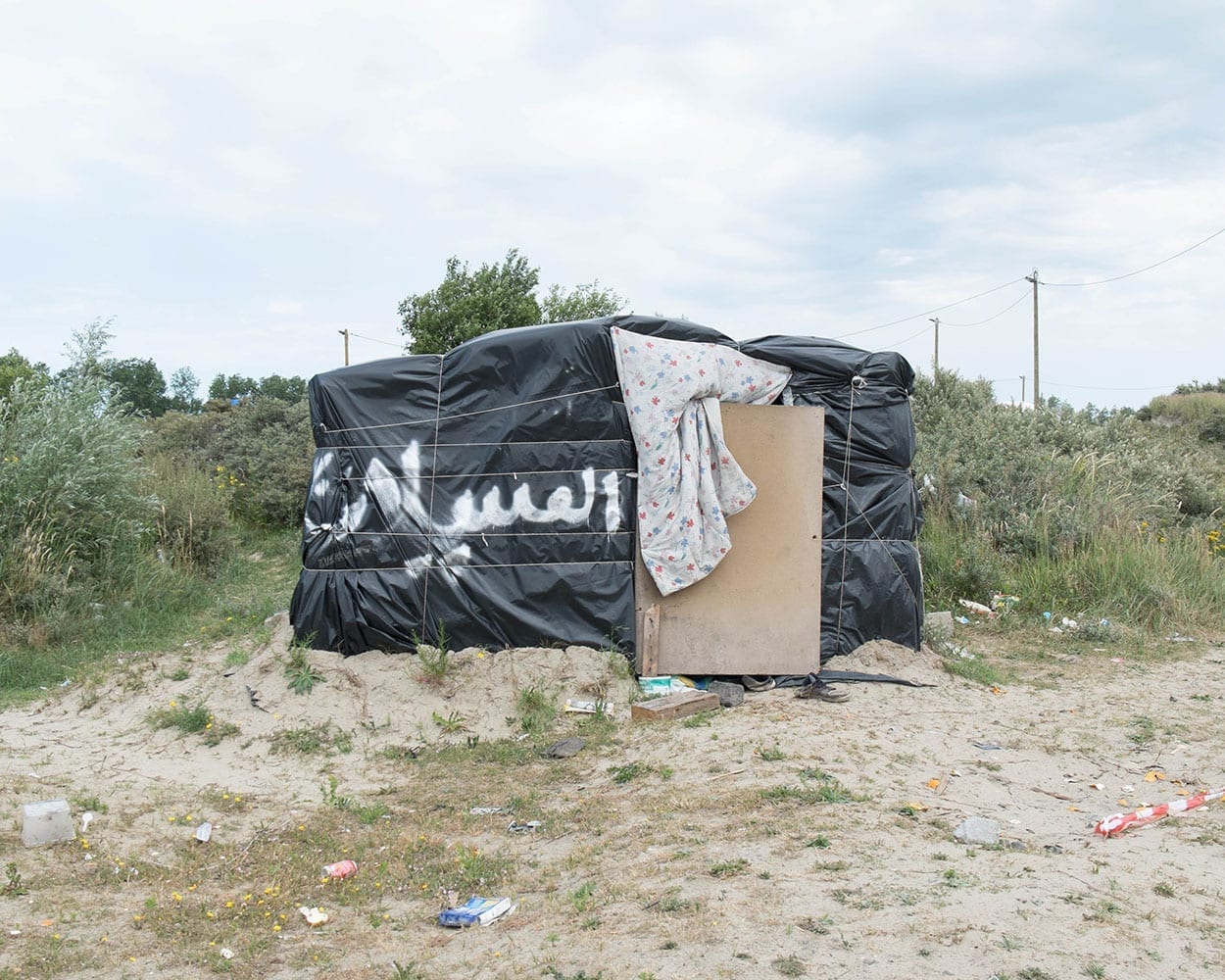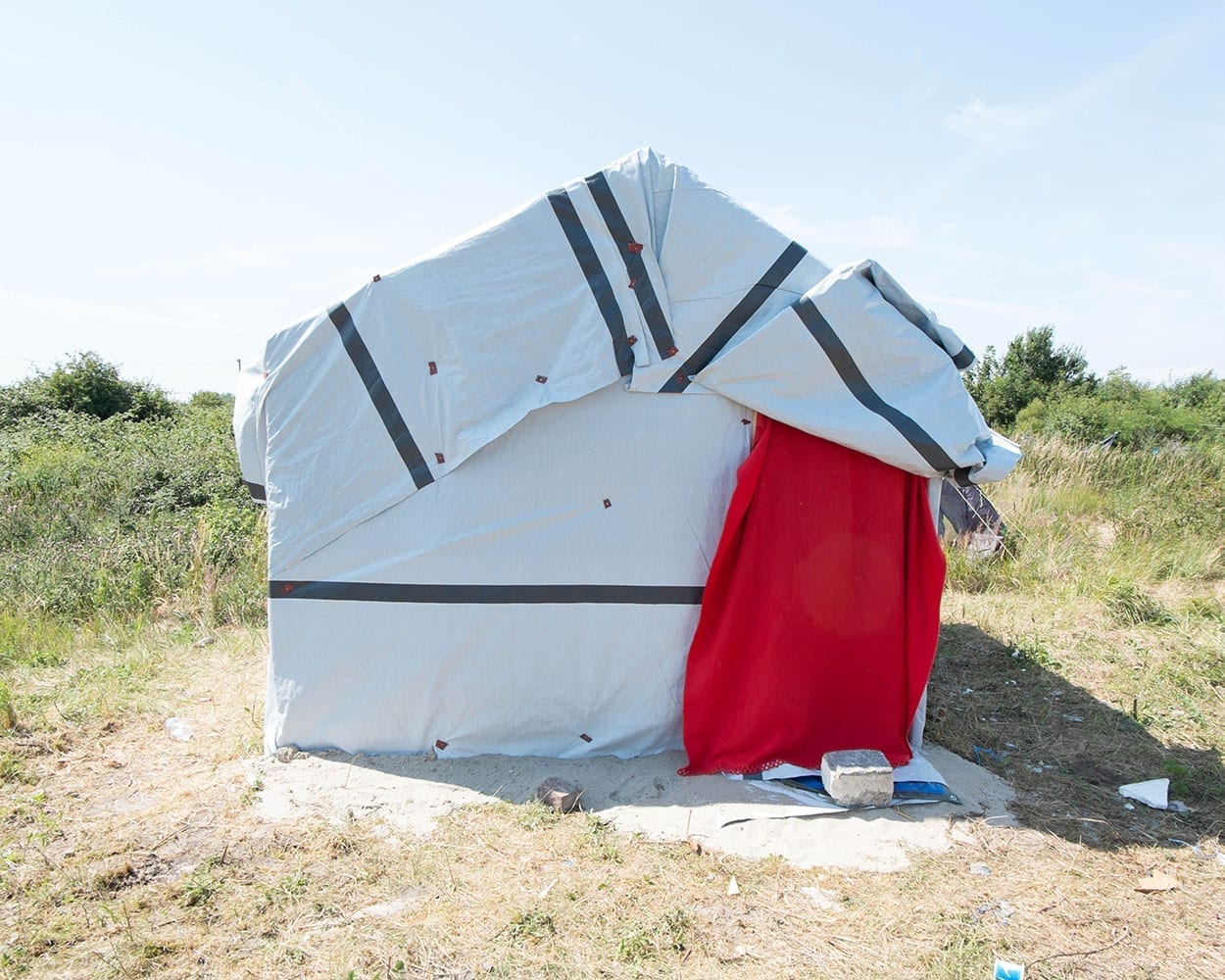Each image still serves as a living testament of sorts, but as winter approaches, I fear they will begin to form colonies of graves with unsustainable futures, for which, I have no answers.
As I sit pondering the world from my rainy residency in Brussels under a terrorist lockdown in which disenfranchised ghosts on the streets huddle under a similar position as Tibero’s work, I am reminded that winter is coming and that with the onset of the bitter wet cold, my lofty and privileged position allows me to look into a city brimming with the mismanagement of fear, anger, and a general dystopian outlook with a pause to reflect. The banter of overcoming, hope, and the platitudes of the government espousing negligible remarks and tough talk on the modern state of emergency warfare economics are unsettling to say the least.

@ Marco Tiberio

@ Marco Tiberio
It’s as if a ‘New Topographics’ has sprung up over the past year with Ikea bags, plastic bottles, and bodies hardly prepared for winter are seen as a milepost for western warfare and for the fear of the haves and the have nots.
Marco Tiberio, who shares this same city, has been documenting what I can only see as a personalized dystopia by way of refugee tent housing in the Calais camps. Its as if a ‘New Topographics’ has sprung up over the past year with Ikea bags, plastic bottles, and bodies hardly prepared for winter are seen as a milepost for western warfare and for the fear of the haves and the have nots. These camps are rightly called camps. To call them detention centers might be more appropriate. What Tiberio has done is to assemble a typological survey of how the other half lives in the Twenty-first century crisis of bleeding borders and uncomfortable crusades of xenophobia against the displaced. The images do not portend any loftier subscription of artistic practice outside of their aforementioned typologies. Like Bernd And Hilla Becher, the structures generally exist devoid of their inhabitants or the people whom have lent their hand in building their own architecture of necessity. What we have is a survey of western inefficiency through archetized dwelling with in which elite western hands are bruised on the backs of the impoverished and homeless, with barely contained judgment. To say the images are politicized by their very existence or rendering would be fair, but I cannot speak for Tiberio, nor the government for where he lives, nor France, nor England for the English. Each image still serves as a living testament of sorts, but as winter approaches, I fear they will begin to form colonies of graves with unsustainable futures, for which, I have no answers. There is however a command to look, to empathize, to see past the architecture of commodity and to perhaps enable a pathos to these dystopian landscapes. Who knows what spring will bring if the inhabitants are allowed to see it.
Invisibile cities. Architecture of Exodus
(All rights reserved. Text @ Brad Feuerhelm. Images @ Marco Tiberio.)
















